Can you, get Beyond Einstein?
He "never accepted the quantum view of reality: Albert Einstein. He objected to quantum mechanics for several reasons. First, he did not see probabilities as a valid foundation for an entire theory.... Second, Einstein believed that quantum theory was incomplete. "The following requirement for a complete theory seems to be a necessary one: every element of the physical reality must have a counterpart in the physical theory. Quantum mechanics fails in this regard; dealing only with group behavior, it is a theoretical system that cannot account in detail for individual happenings."
Michio Kaku,
Beyond Einstein, p, 47.
Einstein, perhaps the most famous name in 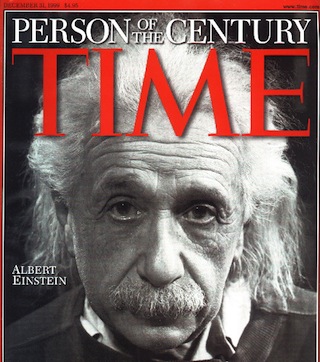 the last century or more of famous names, is a widely recognized icon, if not a very misunderstood thinker. He was a German emigre to America after the intolerance of political subversion drove hundreds of his countries best and brightest to the United States in the decades before World War Two (1939). He joined a diaspora of Europe's intelligentsia who also fled Nazi or Fascist oppression. He did not see the physical or social world as we do because Einstein was a pacifist who also suggested that the ultimate speed limit in the universe was the speed of light.
the last century or more of famous names, is a widely recognized icon, if not a very misunderstood thinker. He was a German emigre to America after the intolerance of political subversion drove hundreds of his countries best and brightest to the United States in the decades before World War Two (1939). He joined a diaspora of Europe's intelligentsia who also fled Nazi or Fascist oppression. He did not see the physical or social world as we do because Einstein was a pacifist who also suggested that the ultimate speed limit in the universe was the speed of light.
How can one possibly get Beyond Einstein? Particularly, when most of the world and I are still trying to grasp a sliver of what the man said about the cosmos, light, gravity, humankind and the necessity for creative, experimental research. Beyond Einstein --the title of Michio Kaku and Jennifer Thompson's book-- about the incredible history of the basic forces holding you, me, the planet and the universe together in at least one time, if not in one place. Get beyond Einstein, how can I when he said there is no such thing as a simultaneous set of events. I always thought things could happen simultaneously or at the same time!
How can I possibly get beyond Einstein? However, of course, by reading the text we discover Einstein was wrong. Just like every person, he became old and cranky and after figuring out why Sir Isaac Newton was --to a degree-- wrong about gravity, Einstein struggled all his life to create a unified field theory. He was so enamored of James C. Maxwell's brilliant work in mathematically explaining and thus uniting electricity and magnetism, he just could not quit the notion of field theory and this love brought him on a quest of grail-like proportions to examine, articulate and explain --heuristically-- a unified field theory.
Einstein debated with Bohr about the universe's inherent behavior. But Einstein never accepted the quantum mechanical discovery that chance and statistical variations were the mathematics necessary to understand the world of the extremely small and the very fast.
He did so by ignoring the implications of Bohr's atom, Heisenberg's brilliance, Fermi's discovery that it takes more than two to tango, Szilard's perceptive understanding of Lise Meitner's, Otto Hahn's and Fritz Strassman's fateful discovery in the dead of winter in 1938-1939, and Oppenheimer's brush with the immense lord Shiva in the New Mexico desert one July morning in 1945.
|
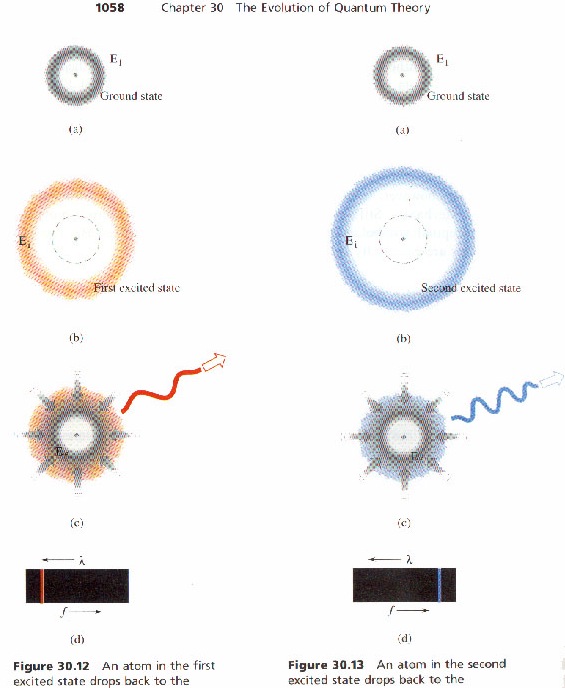 |
|
He did not necessarily fail by not paying close attention to these people, because mathematical equations especially making them up from scratch to describe expected relationships among unrelated things, is pretty impossible to do. Therefore, Einstein locked himself away and tried to tie radioactivity, gravity and electromagnetism together. TheseR.gif) are all very distinct manifestations of natural forces. He was forced to consider the implications of Bohr's atom, but he ultimately rejected Bohr's radical discovery because of what quantum emission and absorption of light ultimately meant. Ultimately Bohr recognized as Einstein could never do that statistical variation was the underlying mathematics of subatomic particles as they emerge into and even construct and deconstruct the world you and I so glibly inhabit.
are all very distinct manifestations of natural forces. He was forced to consider the implications of Bohr's atom, but he ultimately rejected Bohr's radical discovery because of what quantum emission and absorption of light ultimately meant. Ultimately Bohr recognized as Einstein could never do that statistical variation was the underlying mathematics of subatomic particles as they emerge into and even construct and deconstruct the world you and I so glibly inhabit.
Einstein also had to ignore Heisenberg's brilliance when in attempting to comprehend how an electron may move about a proton at the speed of light. How can anything so small travel so fast? Of course, anything traveling at the speed of light, as Einstein predicted, would more than confound the most brilliant of thinkers. That is because light, or electromagnetic radiation --Newton's spectrum being only the visible hint of this-- becomes a clue to the very structure of matter, the distances in the cosmos and a new geometry.
By ignoring Enrico Fermi's discovery that it takes more than two to tango, Einstein would be rudely approached by his friend and associate Leo Szilard in order to awaken the political establishment to the fundamental practical meaning of Fermi's discovery of the uncharged but massive subatomic particle resting, if not asleep in the core of many atoms. Fermi in discovering the neutron would open the doors of Heaven and Hell. That was not because of scientists and their findings but because in 1930, when neutrons were discovered to be something like a proton but more massive and less charged, the world stood on the brink of a political tidal wave as the commercial waters ebbed relentlessly down into a global economic depression so serious, so prolonged and so devastating that it has been called "The Great Depression."
So, what did Einstein need Szilard to tell him? In his Long Island New York home, Einstein labored away on a unified field theory, clearly, the neutron unified the understanding of protons and electrons, but unaware of Szilard's recognition that a neutron was like a silver bullet.
Szilard's perceptive arose from a deep understanding of fission and the implications of that were experimentally being revealed in late 1938 by Lise Meitner's, Otto Hahn's and Fritz Strassman's chemistry involving the bombardment of uranium, a heavy (massive) atomic nuclei with slow moving neutrons, produced two less massive nuclei where there had once been one.
Thus Hahn's fateful discovery in the dead of winter in 1938-1939, sent shock waves through physicists in a 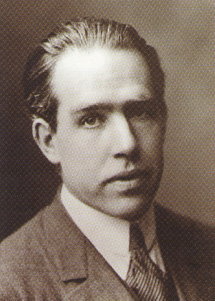 European world being crushed under the weight of storm troopers boots and a Triple Entente reeling from German extortion of the resources of the Rhineland, the Sudetenland and of all Austria itself by the dismal winter of 1938. Anyone not immersed in a unified field theory equation to explain all of reality can be forgiven for not seeing what Szilard did. After all, its easier to see a piece of a puzzle and Szilard saw that an far more, than it is to see everything at once and how a crucial piece might ultimately spin out of control. Szilard knew, Lise Meitner knew, Bohr knew and Werner Heisenberg all knew exactly what Otto Hahn had experimentally proven as probable and they were all terrified. Hahn had split matter released enormous amounts of energy and worse, generated neutrons to loose even more uranium to fission and release ever greater amounts of energy. More explosive energy than one can imagine would be available to strategic planners.
European world being crushed under the weight of storm troopers boots and a Triple Entente reeling from German extortion of the resources of the Rhineland, the Sudetenland and of all Austria itself by the dismal winter of 1938. Anyone not immersed in a unified field theory equation to explain all of reality can be forgiven for not seeing what Szilard did. After all, its easier to see a piece of a puzzle and Szilard saw that an far more, than it is to see everything at once and how a crucial piece might ultimately spin out of control. Szilard knew, Lise Meitner knew, Bohr knew and Werner Heisenberg all knew exactly what Otto Hahn had experimentally proven as probable and they were all terrified. Hahn had split matter released enormous amounts of energy and worse, generated neutrons to loose even more uranium to fission and release ever greater amounts of energy. More explosive energy than one can imagine would be available to strategic planners.
Hahn had directed a beam of neutrons at a uranium sample. Meitner in Scandinavia, having fled racial laws in Germany, when discussing Hahn's published findings with her nephew commented that the result resembles 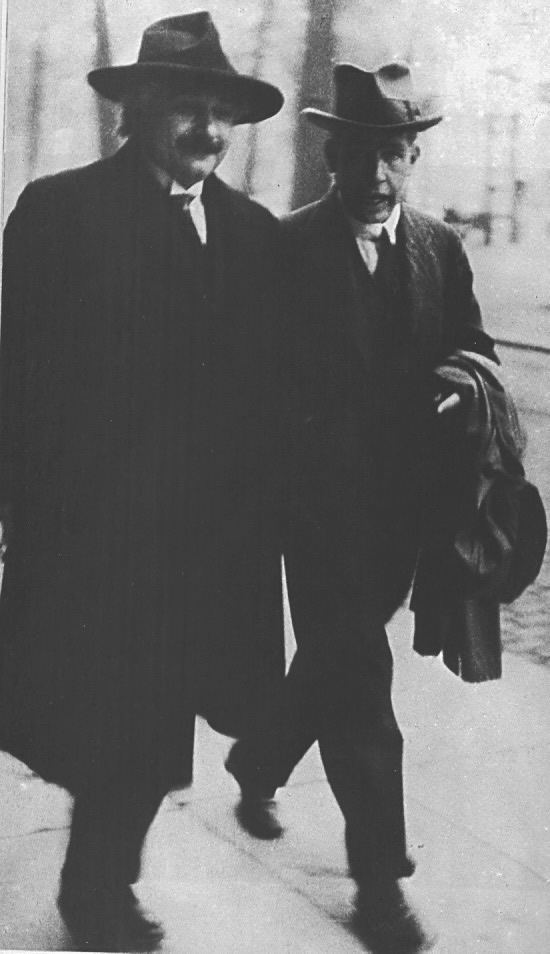 what happens in a bacterium when it undergoes mitosis or cellular division. The world of physics did not even have a word for what Hahn reported. Hahn had detected, in the place of uranium, some indication of two other, less massive, atomic elements: Krypton and Barium. How could one kind of atomic element form two less massive and very different atomic elements?
what happens in a bacterium when it undergoes mitosis or cellular division. The world of physics did not even have a word for what Hahn reported. Hahn had detected, in the place of uranium, some indication of two other, less massive, atomic elements: Krypton and Barium. How could one kind of atomic element form two less massive and very different atomic elements?
When one bacterium becomes two, microbiologists had labeled the process as fission to distinguish it from sex cell becoming two though meiosis of reduction division.
Fission is the word, according to the story of Meitner and her nephew that they suggested explained the release of energy that accompanied the splitting of uranium into two other substances, but more radically, the result also produced more neutrons! The additional neutrons are available to continue, in a chain reaction, further fission of the remaining uranium.
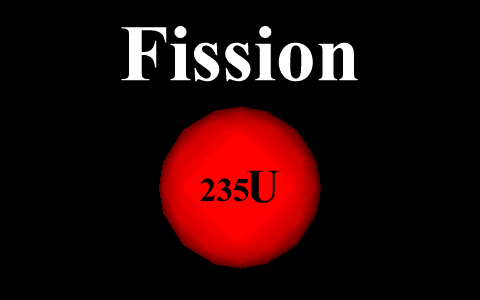 Szilard years before had, based on Fermi's findings extrapolated and then tested the element indium to see if neutrons could in a very real sense break the atomic element into parts. He failed in his experiment where Hahn and Strassman, using uranium instead, had succeeded! Thus Szilard of all people, a simple Hungarian refugee and brilliant experimental scientist, knew precisely what could happen on the quantum level where Bohr had argued with Einstein over the mind of God and on the macro scale of human engineering. That is Szilard understood the world of the very small and precisely how it was now poised to intrude ever so timelessly into the world of human relations.
Szilard years before had, based on Fermi's findings extrapolated and then tested the element indium to see if neutrons could in a very real sense break the atomic element into parts. He failed in his experiment where Hahn and Strassman, using uranium instead, had succeeded! Thus Szilard of all people, a simple Hungarian refugee and brilliant experimental scientist, knew precisely what could happen on the quantum level where Bohr had argued with Einstein over the mind of God and on the macro scale of human engineering. That is Szilard understood the world of the very small and precisely how it was now poised to intrude ever so timelessly into the world of human relations.
Szilard, chilled by the prospect of German Gestapo, SS, and Wermacht decision makers getting their hands on the uranium-rich Sudeten ore lands of what had been Czechoslovakia, drafted a letter. Teller and Szilard urged Einstein to sign their epistle. Einstein knew all to well what fission would mean and he allowed Szilard and his fellow Hungarian physicist Teller get the message directly to President Franklin Roosevelt.
Thus, Teller, Einstein, and Szilard sat in a New York home and discussed the need for a project to race the German physicists to a finish line called the atomic weapon by some and armageddon by the more romantically inclined. It was this chain reaction that led to the chain of events that initiated the Manhattan Project, created the first sustained nuclear chain reaction at the University of Chicago, in 1942, (beneath a squash court no less) and placed J. Robert Oppenheimer in command of the most secret billion dollar project in the nation's history. On the way to devising a unified field theory a funny thing happened to the pacifist Einstein, he started a process that might possibly be used in --to use the haunting words of Henry Adams in a long forgotten letter to his brother 75 years earlier-- "blowing up the world."
Marx, The Machine in the Garden, p. 350.
Einstein failed. He did not succeed in either his pacifism or his search for the grail of a unified field theory. Life after all, as Karen Horney suggests, has a way of being actual, not rhetorical, not ideal and not even nice as we may think it is. If life is a series of events, than, events just are and we had better look at those events in the clear light of actual reality and not in some mysteriously --self important-- or purposely-arcane way, if we are to escape being fooled.
So Einstein failed but he did warn us that the discoveries of physics had "changed everything" he insisted, "except for the way we think!" And Michio Kaku, a fellow pacifist, survivor of the American internment camps in California for Americans of Japanese ancestry, tells us as well the world is not as it appears to be.
The world appears to us as a safe four-dimensional spacetime continuum or a pleasant room of three dimensions in which we had our kind have adapted and survived. No the universe has played an awesome trick on us.
No, I cannot get beyond Einstein in any honest manner except to say that he and his colleagues beginning with J. J. Thompson and Marie Curie to Richard Feynman and Murray Gell-Mann have changed the way I think about physics of the cosmos. They have altered my understanding of the complexity of the universe, the simplicity of the structure and the enormous diversity of life on a planet that seems to want partnerships to survive. Of course, the planet does not desire anything; it just allows some things to thrive, while crushing most everything else in to dust. Even Einstein is dust now, so in that sense I am beyond Einstein. But he is really way beyond me, nonetheless and therein lies the illusion of this book about the world since his passing.
While that sense of being beyond Einstein, in the paragraph above, is an extremely limited sense of time, Kaku reminds us that time is more than what it appears to be to us and that, if anything, time is the dimension that simultaneously adds to and takes from us our existence.
So what kind of world do we actually dwell in? Not three dimensions but four dimensions exist, or so Einstein insisted, and like flatlanders, in the novel and social commentary of the nineteenth century we just cannot seem to get it. That is the world looks to us like it has three or four (time) dimensions and four fundamental forces and then there are hints that its not that way at all. The hints are from light as it is refracted in prisms.
 Other hints come from what a magnet does to iron filings. Unseen but present is the outline made by the filings in a magnetic field. Many of the hints lie all around us. The electromagnetic field possesses the forces that also are manifest in the chemistry of life. That chemistry gives rise to the diversity of living things. Additional hints reside in the miracles of symbiotic plant life converting red and blue light into food, fuel and fiber to feed our imaginations, clothe our exposed egos and fuel our unconscious id! What each of these hints suggest is just beyond everyday perception of complex differences is the fare deeper reality of forces in fields where reciprocal responses or actions is indistinguishable from reactions.
Other hints come from what a magnet does to iron filings. Unseen but present is the outline made by the filings in a magnetic field. Many of the hints lie all around us. The electromagnetic field possesses the forces that also are manifest in the chemistry of life. That chemistry gives rise to the diversity of living things. Additional hints reside in the miracles of symbiotic plant life converting red and blue light into food, fuel and fiber to feed our imaginations, clothe our exposed egos and fuel our unconscious id! What each of these hints suggest is just beyond everyday perception of complex differences is the fare deeper reality of forces in fields where reciprocal responses or actions is indistinguishable from reactions.
The world has hints for us to see that all the appearances of three or four dimensions are deceiving us because we live in at least five if not more dimensions where mathematicians as brilliant as Edward Whitten have found a seriously impressive glimpse of something very removed from our experiences. That something is what Einstein may have sensed, but did not discover.
As Moses did before him, Einstein brought us to the very gates of the promised land, but he himself never saw the mathematical outlines of the unified field. It is now what Whitten says in his formulas and his equations that he sees. Through the heuristic doors of perception that is higher mathematics, some physicists have had a glimpse of those regions where --way beyond our senses-- the unified field dwells and where the strong force is undistinguishable from the force of gravity and gives rise to the electro-weak force of everything you and I know.
Beyond Einstein means others have seen what he sought but could not formalize into an equation as exquisite as his original, 1905 model, of E=Mc2 or energy equals mass times the speed of light squared.
While we are fooled by our senses, we transcend those illusions by our thoughtful understanding. Nevertheless, the mind can delude us into thinking we are beyond something , as Einstein clearly warns us, that we are certainly not. We are still children, deluded by our play, mastering the details of hydrogen bombs, fiddling with radioactive decay particles, but not really giving up our idols because they have made us what we are. Our idols have given us comfort in the dark that we are right. Our idols have quieted our raw nerves when we so crave rest. However, our idols are now knocking at the door of our subconscious mind and asking us to abandon the appearances. Einstein suggested the appearances are transient, elusive and evanescent.
These four idols are what stand between the world and us. They keep people from envisioning that everyone is part of a dynamic cosmos. The idols stop us from realizing that we are players in a cosmic game of chance. We are idle, still, unmoved; idlers in a spinning universe. We might be visionaries if we only remove our blinders to the sacred depths of nature. These sacred realms are made all the more profound by the profane discoveries of monks and madmen, physicists and biologists, chemists and anthropologists who point out -- if we can see it -- that we are the latest expression of the unified field. We are the unified field 20 billion years after the universe cracked its ten dimensions into four dimensions and out rolled the neutrons. These unbound neutrons decay steadily into protons, electrons and neutrinos that now so beautifully distinguish, define and delude you and me. Every thirteen minutes an unbound neutron decays into a hydrogen atom; a proton and a neutron emitting energy in the form of light. From that decay our world originates.
We are all riders on a strip that Karl Mobius realized and told us appears in time to be a two sided affair, but on second glance, is an endlessly single sided reality of more dimensions than you will ever find by examining the head of a pin.
2352 words
JVS
Thursday, April 6, 2006

Both strong and weak nuclear forces are of extremely short range (approximately 10 -13 cm); the strong force is roughly 100 times greater, and the weak 10 10 times less, than the electromagnetic force holding the atom together."
p. 304, Dictionary of the History of Science.
| forces |
strength |
| strong |
100 times greater |
| weak |
100,000,000,000 less |
| electromagnetic |
holds the atom together |
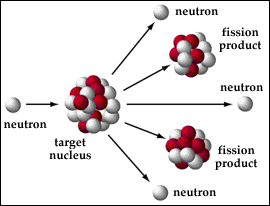
Events of the 1930s
1934, reoccupation of the Rhineland by Germany and French withdrawal.
1936, the Munich Agreement for Germany to occupy the Sudetenland
1938, Aunschluss; German unification with Austria.
1939, German invasion of Poland.
1940, The surrender of France.

BLOG: older version below:
Can you get Beyond Einstein?
Einstein, perhaps the most famous name in the last century of more of famous names, is a widely recognized icon, if not totally misunderstood thinker. He was a German emigre to America after the intolerance of political subversion drove hundreds of his countries best and brightest along with Europe's intelligentsia to the United States in the decades before World War Two (1939).
How can one possibly get Beyond Einstein? Particularly, when I and most of the world are still trying to grasp a sliver of what the man said about the cosmos, light, gravity, humankind and the necessity for creative, experimental research. Beyond Einstein --the title of Michio Kaku and Jennifer Thompson's book-- about the incredible history of the basic forces holding you, me, the planet and the universe together in at least one time, if not in one place!
How can I possibly get beyond Einstein? But of course, by reading the text we discover Einstein was wrong. Just like every person, he became old and cranky and after figuring out why Sir Isaac Newton was --to a degree-- wrong about gravity, Einstein struggled all his life to create a unified field theory. he was so enamored of James C. Maxwell's brilliant work in mathematically explaining and thus uniting electricity and magnetism, he just could not quit the notion of field theory and this love brought him on a quest of grail-like proportions to examine, articulate and explain --heuristically-- a unified field theory.
He did so by ignoring the implications of Bohr's atom, Heisenberg's brilliance, Fermi's discovery that it takes more than two to tango, Szilard's perceptive understanding of Lise Meitner's, Otto Hahn's and Fritz Strassman's fateful discovery in the dead of winter in 1938-1939, and Oppenheimer's brush with the immense lord Shiva in the New Mexico desert one July morning in 1945.
He did not necessarily fail by not paying close attention to these people, because mathematical equations especially making them up from scratch to describe expected relationships among unrelated things, is pretty impossible to do. So Einstein locked himself away and tried to tie radioactivity, gravity and electromagnetism together. These are all very distinct manifestations of natural forces. He was forced to consider the implications of Bohr's atom, but he ultimately rejected Bohr's radical discovery because of what quantum emission and absorption of light ultimately meant. Ultimately Bohr recognized as Einstein could never do that statistical variation was the underlying mathematics of subatomic particles as they emerge into and even construct and deconstruct the world you and I so glibly inhabit.
Einstein also had to ignore Heisenberg's brilliance when in attempting comprehend how an electron may move about a proton at the speed of light. How can anything so small travel so fast? Of course anything traveling at the speed of light, as Einstein predicted, would more than confound the most brilliant of thinkers. That is because light, or electromagnetic radiation --Newton's spectrum being only the visible hint of this-- becomes a clue to the very structure of matter, the distances in the cosmos and a new geometry.
By ignoring Enrico Fermi's discovery that it takes more than two to tango, Einstein would be rudely approached by his friend and associate Leo Szilard in order to awaken the political establishment to the fundamental practical meaning of Fermi's discovery of the uncharged but massive subatomic particle resting, if not asleep in the core of many atoms. Fermi in discovering the neutron would open the doors of Heaven and Hell. That was not because of scientists and their findings but because in 1930, when neutrons were discovered to be something like a proton but more massive and less charged, the world stood on the brink of a political tidal wave as the commercial waters ebbed relentlessly down into a global economic depression so serious, so prolonged and so devastating that it has been called "The Great Depression."
So what did Einstein need Szilard to tell him? In his Long Island New York home, Einstein labored away on a unified field theory, clearly the neutron unified the understanding of protons and electrons, but unaware of Szilard's recognition that a neutron was like a silver bullet.
Szilard's perceptive arose from a deep understanding of fission and the implications of that were experimentally being revealed in the late 1930s by Lise Meitner's, Otto Hahn's and Fritz Strassman's chemistry involving the bombardment of heavy (massive) atomic nuclei with slow moving neutrons.
Thus Hahn's fateful discovery in the dead of winter in 1938-1939, sent shock waves through a European world being crushed under the weight of storm troopers boots and a Triple Entente reeling from German extortion of the resources of the Rhineland, the Sudetenland and of all Austria itself by the dismal winter of 1938. Anyone not immersed in a unified field theory equation to explain all of reality can be forgiven for not seeing what Szilard did. After all, its easier to see a piece of a puzzle and Szilard saw that an far more, than it is to see everything at once and how a crucial piece might ultimately spin out of control. Szilard knew, Lise Meitner knew, Bohr knew and Werner Heisenberg all knew exactly what Otto Hahn had experimentally proven as probable and they were all terrified.
Hahn had directed a beam of neutrons at a uranium sample. Meitner in Scandinavia, having fled racial laws in Germany, when discussing Hahn's published findings with her nephew commented that the result resembles what happens in a bacterium when it undergoes mitosis or cellular division. the world of physics did not even have a word for what Hahn reported. for he had detected in the place of uranium some indication of two other, less massive, atomic elements. How could one kind of atomic element form two less massive atomic elements of different species? When one bacterium becomes two, microbiologists had labeled the process as fission to distinguish it from sex cell becoming two though meiosis of reduction division. Fission is the word, according to the story of Meitner and her nephew that they suggested explained the release of energy that accompanied the splitting of uranium into two other substances, but more radically the result also produced more neutrons!
Szilard years before had, based on Fermi's findings extrapolated and then tested the element indium to see if neutrons could in a very real sense break the atomic element into parts. He failed in his experiment where Hahn and Strassman, using uranium instead, had succeeded! Thus Szilard of all people, a simple Hungarian refugee and brilliant experimental scientist, knew precisely what could happen on the quantum level where Bohr had argued with Einstein over the mind of God and on the macro-scale of human engineering. That is Szilard understood the world of the very small and precisely how it was now poised to intrude ever so timelessly into the world of human relations.
Szilard, chilled by the prospect of German Gestapo, SS and Wermacht decision makers getting their hands on the uranium rich Sudeten ore lands of what had been Czechoslovakia, drafted a letter. This was the epistle that Teller and Szilard urged Einstein to sign. Einstein knew all to well what fission would mean and he allowed Szilard and his fellow Hungarian physicist Teller get the message directly to President Franklin Roosevelt.
Thus, Teller, Einstein and Szilard sat in a New York home and discussed the need for a project to race the German physicists to a finish line called the atomic weapon by some and armageddon by the more romantically inclined. It was this chain reaction that led to the chain of events that initiated the Manhattan Project, created the first sustained nuclear chain reaction at the University of Chicago, in 1942, (beneath a squash court no less) and placed J. Robert Oppenheimer in command of the most secret billion dollar project in the nation's history. On the way to devising a unified field theory a funny thing happened to the pacifist Einstein, he started a process that might possibly be used in --to use the haunting words of Henry Adams in a long forgotten letter to his brother 75 years earlier-- "blowing up the world."
Marx, The Machine in the Garden, p. 350.
Of course Einstein failed in both his pacifism and his search for the grail of a unified field theory. Life after all, as Karen Horney suggests has a way of being actual, not rhetorical, not ideal and not even nice as we may think it is, events just are and we had better look at those events in the clear light of actual reality and not in some mysteriously --self important-- or purposely arcane way, if we are to escape being fooled.
So Einstein failed but he did warn us that the discoveries of physics had "changed everything" he insisted, "except for the way we think!" And Michio Kaku, a fellow pacifist, survivor of the American internment camps in California for Americans of Japanese ancestry, tells us as well the world is not as it appears to be a safe four dimensional spacetime continuum or a pleasant room of three dimensions in which we had our kind have adapted and survived. No the universe has played an awesome trick on us.
No, I can't get beyond Einstein in any honest manner except to say that he and his colleagues beginning with J. J. Thompson and Marie Curie to Richard Feynman and Murray Gell-Mann have changed the way I think about matter, simultaneous events, and the physics of the cosmos. They have altered my understanding of the complexity of the universe, the simplicity of the structure and the enormous diversity of life on a planet that seems to exhibit partnerships to survive. Of course the planet does not desire or want this condition, or any other condition, it just allows some things to thrive, while crushing most everything else into dust. Even Einstein is dust now, so in only that sense, I am beyond Einstein. His discoveries and his beliefs are difficult to comprehend and they leave no room for human intentions to be of any cosmic importance.
While that sense of human significance and cosmological importance, in the phrase above, encompasses an extremely limited sense of time, Kaku reminds us that time is more than what it appears to us to be. Kaku argues that time is the dimension that simultaneously adds to, and takes from us our existence. We occupy, not just three dimensions but four! Einstein insisted we take up four dimensions (if not more) and like flatlanders, in the novel and social commentary of the nineteenth century we just can't seem to get it. That is the world looks to us like it has three or four (time) dimensions and four fundamental forces and then there are cosmic clues, inherent hints that reality is not that way at all. These hints are derived from the behavior of light as it is refracted in prisms. Another hint is found in what a magnet does to iron filings, and these hints lie all around us in the electromagnetic forces that allow for the chemistry of life and the energy needed to induce the miracle of symbiotic plant life converting red and blue light into food, fuel, forage, and fiber to feed our bodies, clothe our exposed egos, ignite our imaginations, and foster our unconscious id!
The world hides inherent hints for us to see that all the appearances of three or four dimensions are deceiving us because we live in at least five if not more dimensions where mathematicians as brilliant as Edward Whitten have found a seriously impressive glimpse of something very removed from our experiences. That "something" is what Einstein may have intuited, but did not discover. As Moses did before him, Einstein brought all of us to the very gates of the promised land, but he himself never saw the mathematical outlines of the unified field.
It is only now what Whitten sees revealed in his formulas and his equations that lead him to speculate we are afloat in a sea of shimmering strings. The different resonating frequencies of these strings bring existence; you, me, and this cosmos into existence. Through the heuristic doors of perception that is higher mathematics, some physicists have had a glimpse of those regions where way beyond our senses the unified field dwells and where the strong force is united with the force of gravity and gives rise to the electro-weak force of everything you and I know. Beyond Einstein means others have seen what he sought but could not formalize into an equation as exquisite as his original, 1905 model, of E=Mc squared.
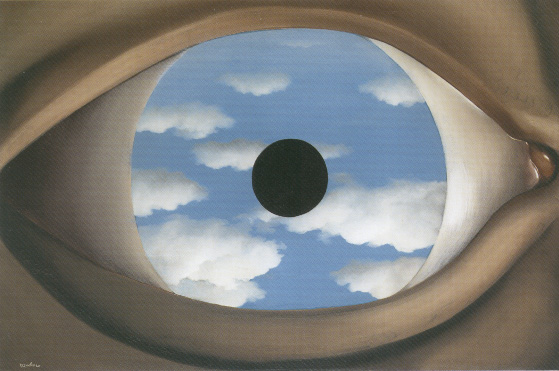
While we are fooled by our senses, we transcend that illusions by our thoughtful understanding. But the mind can delude us into thinking we are beyond something that we, as Einstein clearly warns us we are not. We are still children, deluded by our play, mastering the details of hydrogen bombs, fiddling with radioactive decay particles, but not really giving up our idols because they have made us what we are. Our idols have given us comfort in the dark that we are right. Our idols have quieted our raw nerves when we so desired rest. But our idols are now knocking at the door of our subconscious mind and asking us to abandon the appearances. These four idols are what stand between us and seeing that we are part of a far more dynamic world than we can imagine. We are all players in a cosmic game of chance, idlers in a spinning universe, visionaries–if we only remove our blinders–to the sacred depths of nature made all the more profound by the profane discoveries of monks and madmen, physicists and biologists, chemists and anthropologists who point out–if we could only see it–that we are but the latest expression of the unified field, 20 billion years after the universe cracked open into ten dimensions and out rolled the neutrons that decayed steadily into protons, electrons and neutrinos that now so beautifully distinguish, define, delineate and, yet, delude you and me.
 We are all riders on a strip that Karl Möbius realized and told us appears in time to be a two sided affair, but on second glance, is an endlessly single sided reality of more dimensions than you will ever find by examining the head of a pin.
We are all riders on a strip that Karl Möbius realized and told us appears in time to be a two sided affair, but on second glance, is an endlessly single sided reality of more dimensions than you will ever find by examining the head of a pin.
Tattersall | Thomas | Einstein | Gell Mann | Feynman | Bohr


R.gif) are all very distinct manifestations of natural forces. He was forced to consider the implications of Bohr's atom, but he ultimately rejected Bohr's radical discovery because of what quantum emission and absorption of light ultimately meant. Ultimately Bohr recognized as Einstein could never do that statistical variation was the underlying mathematics of subatomic particles as they emerge into and even construct and deconstruct the world you and I so glibly inhabit.
are all very distinct manifestations of natural forces. He was forced to consider the implications of Bohr's atom, but he ultimately rejected Bohr's radical discovery because of what quantum emission and absorption of light ultimately meant. Ultimately Bohr recognized as Einstein could never do that statistical variation was the underlying mathematics of subatomic particles as they emerge into and even construct and deconstruct the world you and I so glibly inhabit.  European world being crushed under the weight of storm troopers boots and a Triple Entente reeling from German extortion of the resources of the Rhineland, the Sudetenland and of all Austria itself by the dismal winter of 1938. Anyone not immersed in a unified field theory equation to explain all of reality can be forgiven for not seeing what Szilard did. After all, its easier to see a piece of a puzzle and Szilard saw that an far more, than it is to see everything at once and how a crucial piece might ultimately spin out of control. Szilard knew, Lise Meitner knew, Bohr knew and Werner Heisenberg all knew exactly what Otto Hahn had experimentally proven as probable and they were all terrified. Hahn had split matter released enormous amounts of energy and worse, generated neutrons to loose even more uranium to fission and release ever greater amounts of energy. More explosive energy than one can imagine would be available to strategic planners.
European world being crushed under the weight of storm troopers boots and a Triple Entente reeling from German extortion of the resources of the Rhineland, the Sudetenland and of all Austria itself by the dismal winter of 1938. Anyone not immersed in a unified field theory equation to explain all of reality can be forgiven for not seeing what Szilard did. After all, its easier to see a piece of a puzzle and Szilard saw that an far more, than it is to see everything at once and how a crucial piece might ultimately spin out of control. Szilard knew, Lise Meitner knew, Bohr knew and Werner Heisenberg all knew exactly what Otto Hahn had experimentally proven as probable and they were all terrified. Hahn had split matter released enormous amounts of energy and worse, generated neutrons to loose even more uranium to fission and release ever greater amounts of energy. More explosive energy than one can imagine would be available to strategic planners.  what happens in a bacterium when it undergoes mitosis or cellular division. The world of physics did not even have a word for what Hahn reported. Hahn had detected, in the place of uranium, some indication of two other, less massive, atomic elements: Krypton and Barium. How could one kind of atomic element form two less massive and very different atomic elements?
what happens in a bacterium when it undergoes mitosis or cellular division. The world of physics did not even have a word for what Hahn reported. Hahn had detected, in the place of uranium, some indication of two other, less massive, atomic elements: Krypton and Barium. How could one kind of atomic element form two less massive and very different atomic elements? 
 Other hints come from what a magnet does to iron filings. Unseen but present is the outline made by the filings in a magnetic field. Many of the hints lie all around us. The electromagnetic field possesses the forces that also are manifest in the chemistry of life. That chemistry gives rise to the diversity of living things. Additional hints reside in the miracles of symbiotic plant life converting red and blue light into food, fuel and fiber to feed our imaginations, clothe our exposed egos and fuel our unconscious id! What each of these hints suggest is just beyond everyday perception of complex differences is the fare deeper reality of forces in fields where reciprocal responses or actions is indistinguishable from reactions.
Other hints come from what a magnet does to iron filings. Unseen but present is the outline made by the filings in a magnetic field. Many of the hints lie all around us. The electromagnetic field possesses the forces that also are manifest in the chemistry of life. That chemistry gives rise to the diversity of living things. Additional hints reside in the miracles of symbiotic plant life converting red and blue light into food, fuel and fiber to feed our imaginations, clothe our exposed egos and fuel our unconscious id! What each of these hints suggest is just beyond everyday perception of complex differences is the fare deeper reality of forces in fields where reciprocal responses or actions is indistinguishable from reactions.


